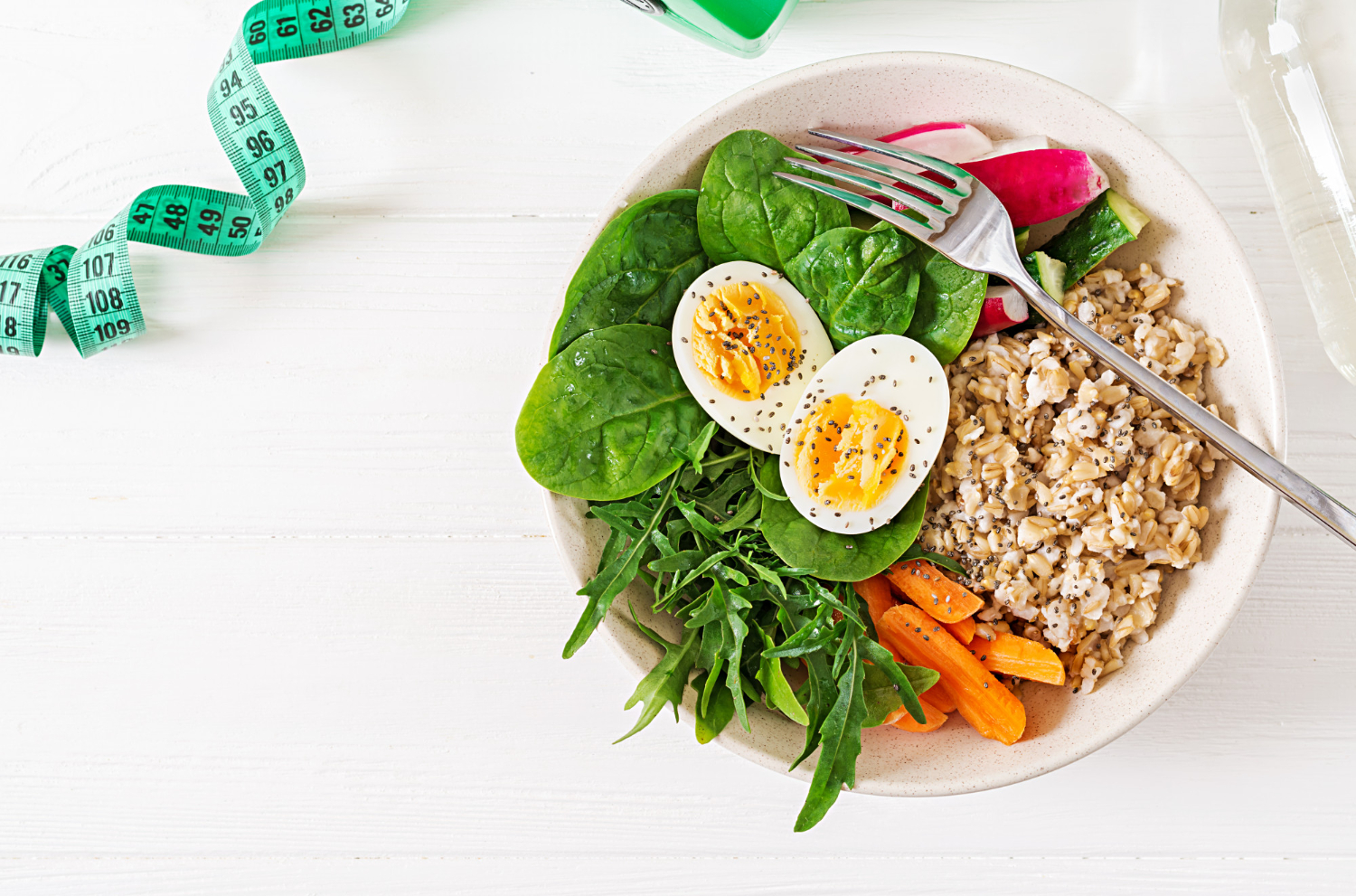A Comprehensive Guide
Introduction
Losing weight can be a grueling and frustrating process, but with the right diet plan, it can be attainable and sustainable. A healthy diet plan for weight loss should concentrate on nourishing your body with the right nutrients, rather than just cutting calories. In this article, we will give a comprehensive guide to creating a diet plan for weight loss, including tips on how to choose the right foods, meal planning, and staying motivated.
- Determine your calorie needs The first step in creating a diet plan for weight loss is to determine how numerous calories you need to consume each day to lose weight at a healthy and sustainable rate. This will depend on your age, gender, weight, height, and activity level. You can use an online calculator or consult with a healthcare professional to determine your calorie needs.
- Choose nutrient-dense foods Rather than just focusing on cutting calories, it’s important to choose nutrient-dense foods that will nourish your body and help you feel satisfied. This includes a plenitude of fruits and vegetables, whole grains, spare proteins, and healthy fats. These types of foods are high in fiber, vitamins, and minerals, which can help keep you feeling full and satisfied, and may also help reduce the threat of habitual conditions similar to heart complaints and diabetes.
- Plan your meals and snacks Meal planning can be a useful tool for sticking to a healthy diet and losing weight. Planning your meals and snacks in advance can help you avoid making impulsive, unhealthy food choices when you are short on time or feeling empty. Consider preparing meals and snacks in advance, or keeping healthy options on hand for when you are on the go.
- Incorporate physical activity In addition to following a healthy diet, it’s important to incorporate physical activity into your weight loss plan. This can help boost your metabolism, increase muscle mass, and ameliorate overall health. Aim for at least 2h30 of moderate-intensity exercise or 1h15 of vigorous-intensity exercise each week.
- Stay motivated Losing weight can be a long and grueling process, so it’s important to stay motivated and concentrated on your pretensions. You may also find it helpful to set small, achievable goals and award yourself when you reach them.
A healthy diet plan for weight loss should concentrate on nourishing your body with the right nutrients, rather than just cutting calories. By determining your calorie needs, choosing nutrient-dense foods, planning your meals and snacks, incorporating physical exertion, and staying motivated, you can produce a sustainable and effective diet plan for weight loss.
Determining Your Calorie Needs for Weight Loss

The first step in creating a diet plan for weight loss is to determine how numerous calories you need to consume each day to lose weight at a healthy and sustainable rate. This will depend on several factors, including your age, gender, weight, height, and activity level.
There are several styles you can use to determine your calorie needs, including online calculators and consulting with a healthcare professional. Then are many crucial considerations to keep in mind when determining your calorie needs:
Age and gender: Your calorie needs may differ grounded on your age and gender. Generally, men have higher caloric needs than women, and older people tend to have lower caloric needs than younger people.
Weight and height: Your weight and height can also affect your calorie needs. However, you may need to eat fewer calories to lose weight if you are overweight. On the other hand, if you are lightweight, you may need to consume more calories to reach a healthy weight.
Activity level: Your activity level is another important factor to consider when determining your caloric needs. However, you will likely have lower caloric needs than a very active person if you are sedentary. It’s important to consider not only your formal exercise routine, but also the level of activity in your daytime life, such as walking, standing, and carrying groceries.
There are several online calculators available that can help you determine your calorie needs to be grounded on these factors. Some popular options include the Harris-Benedict equation and the Mifflin-St. Jeor equation (BMR Calculator – “The Harris-Benedict Equation was one of the earliest equations introduced. It was revised in 1984 to be more accurate and was used up until 1990 when the Mifflin-St Jeor Equation was introduced. The Mifflin-St Jeor Equation has been shown to be more accurate than the revised Harris-Benedict Equation.“)
These calculators will give an estimate of your daily caloric needs, which you can use as a starting point for creating your diet plan.
Alternatively, you can consult with a healthcare professional, similar to a registered dietitian, to determine your calorie needs. They can take into account your individual circumstances and help you produce a customized plan that meets your specific needs.
Keep in mind that calorie needs may vary depending on your goals. However, you will need to consume fewer calories than you burn each day if you are trying to lose weight. On the other hand, if you are trying to gain weight, you will need to consume more calories than you burn. It’s important to work with a healthcare professional to determine the right calorie intake based on your goals and lifestyle.
Choosing Nutrient-dense Foods for Weight Loss

When creating a diet plan for weight loss, it’s important to concentrate on nourishing your body with the right nutrients, rather than just cutting calories.
Choosing nutrient-dense foods can help you feel satisfied, maintain energy situations, and support overall health.
Then are some tips for choosing nutrient-dense foods
Eat plenty of fruits and vegetables: Fruits and vegetables are packed with fiber, vitamins, and minerals, and they’re low in calories. Aim to consume a variety of different types and colors, as this will help ensure you’re getting a wide range of nutrients.
Choose whole grains: Whole grains, similar to whole wheat, oats, quinoa, and brown rice, are high in fiber and nutrients. They can help keep you feeling full and satisfied, and may also help reduce the threat of habitual conditions similar to heart complaints and diabetes.
Include lean proteins: Lean proteins, similar to chicken, turkey, fish, beans, and tofu, are important for structuring and repairing tissues, and they can help keep you feeling full and satisfied. Aim to consume a variety of different types of protein to insure you’re getting a balanced input of amino acids.
Include healthy fats: Healthy fats, similar to those set up in avocados, nuts, and olive oil, are important for maintaining heart health and supporting overall health. Choose monounsaturated and polyunsaturated fats over saturated and trans fats, which have been linked to an increased threat of heart complaints.
By incorporating a variety of nutrient-dense foods into your diet, you can support your weight loss pretensions while also nourishing your body and reducing the threat of habitual conditions.
Remember to concentrate on portion sizes and choose foods that are minimally reused and free of added sugars and unhealthy ingredients. This will help ensure you’re getting the most nutrients possible from your food choices.
Meal Planning for Weight Loss
Meal planning can be a useful tool for sticking to a healthy diet and losing weight. Planning your Meals and snacks in advance can help you avoid making impulsive, unhealthy food choices when you’re short on time or feeling hungry. Then are many tips for Meal planning:
Determine your calorie needs: The first step in Meal planning is to determine your calorie needs, as bandied in the former section. This will help you determine how important food you should be eating each day and help guide your food choices.
Make a list of healthy Meals and snacks: Once you have determined your calorie needs, make a list of healthy Meals and snacks that you enjoy and that fit within your calorie range. This may include effects like roasted vegetables, a lemon and avocado serape, or a smoothie made with frozen fruit and spinach.
Plan your Meals and snacks for the week: Once you have a list of healthy Meals and snacks, plan out your Meals and snacks for the week, consider preparing Meals and snacks in advance, or keeping healthy options on hand for when you are on the go. You may find it helpful to use a Meal planning app or software, or simply produce a written plan on paper or in a spreadsheet.
Shop your ingredients: Once you have your Meal plan in place, make a list of the ingredients you’ll need for the week and head to the grocery store.
Prepare your Meals and snacks in advance: Consider preparing your Meals and snacks in advance to make it easier to stick to your plan. This may include cooking large batches of grains or proteins to use throughout the week or preparing vegetables and fruit for easy snacking.
By following these tips, you can produce a sustainable Meal plan that helps you achieve your weight loss pretensions while also furnishing your body with the nutrients it needs to thrive. Remember to be flexible and allow for some inflexibility in your plan to accommodate unanticipated events or cravings.
.
Incorporating Physical Activity into Your Weight Loss Plan
In addition to following a healthy diet, it is vital to include physical activity in your weight loss plan. Physical activity will facilitate boost your metabolism, increase muscle mass, and improve overall health. Here square measure a couple of tips for incorporating physical activity into your weight loss plan:
Aim for a minimum of 150 minutes of moderate-intensity exercise or 75 minutes of vigorous-intensity exercise every week: According to the Centers for Disease Control and Prevention (CDC), adults should aim for at least 150 minutes of moderate-intensity exercise or 75 minutes of vigorous-intensity exercise generally. this can include activities such as walking, running, cycling, swimming, and hobbies.
Find activities that you just fancy: it is vital to settle on physical activities that you just enjoy, as can|this may|this can} create additional probably that you just will stick to them in the future. think about making an attempt at a range of various activities to visualize what works best for you.
Vary your workouts: Alternating your workouts will make it easier to keep things going and stop dissatisfaction. consider incorporating a range of diverse activities into your routines, such as strength training, cardio, and flexibility exercises.
Make it a habit: to form physical activity a property a part of your routine, attempt to create it a habit. think about planning your workouts at a similar time every day, or finding a physical exercise friend to assist keep you intended.
Don’t Forget Non-Exercise Activities Sports: In addition to formal sports exercise, it’s essential to include other activities in your routine. This can include things like taking the stairs instead of the elevator, going for a walk on your lunch break, or horticulture.
By incorporating physical activity into your weight loss plan, you can boost your metabolism, increase your muscle mass and improve your overall health. Remember to focus on your body and seek medical clearance if you have any concerns about starting an alternative exercise routine.
Stay motivated on your weight loss journey

Losing weight can be a long and difficult process, so it’s important to stay motivated and focused on your goals. Here are some tips for staying motivated:
Find a support system: Having a support system, whether or not it’s friends, family, or a support group, can be helpful in keeping you motivated and accountable. consider finding an exercise buddy or joining a weight loss support group to help you stay motivated and stay on track.
Set small, possible goals: Instead of specializing in one oversized, overwhelming goal, try setting smaller, possible goals. It could help you stay motivated and see progress along the way. Consider setting goals related to your diet, exercise, or overall health, and rewarding yourself for reaching them.
Track your progress: Keeping track of your progress can be a strong rational motive. Consider keeping a food and exercise diary, or using a tracking app or website to help you see your progress over time.
Find motivation in off-scale wins: Weight loss isn’t just about the amount over the dimensions. Think about finding motivation in different areas, such as increased energy levels, improved sleep, or reduce chronic health conditions.
Don’t be too hard on yourself: It’s important to be kind to yourself and remember that losing weight can be a journey. Don’t be too hard on yourself if you don’t see progress as quickly as you would like, or if you have setbacks along the way. Instead, try to specialize in the progress you’ve made and therefore the healthy habits you’ve developed.
By staying motivated and focused on your goals, you will be able to create an effective, at-home weight loss program. Don’t forget to think about adapting these tips to your current physical condition and health, and to ask for help when needed.
Conclusion
A healthy diet designed for weight loss should focus on fueling your body with the right nutrients, instead of just cutting calories. By deciding on your caloric needs, selecting nutrient-dense foods, preparing your meals and snacks, incorporating physical activity, and staying motivated, you will be able to produce an effective and well-designed weight-loss diet.
Be sure to consult with a registered nutrition specialist, to create a personalized program that meets your specific needs and goals. Be patient and stay motivated, because the road to weight loss can be a journey, and it’s important to celebrate your progress and the healthy habits you’ve developed.
Remember to always consult a specialist who can make suggestions or offer you alternatives if you are diabetic for example. A very good article about the Diabetic Meal Plan has also been published on this platform
With the correct diet and mental attitude, you will be able to achieve your weight loss goals and maintain a healthy weight for the long term.










